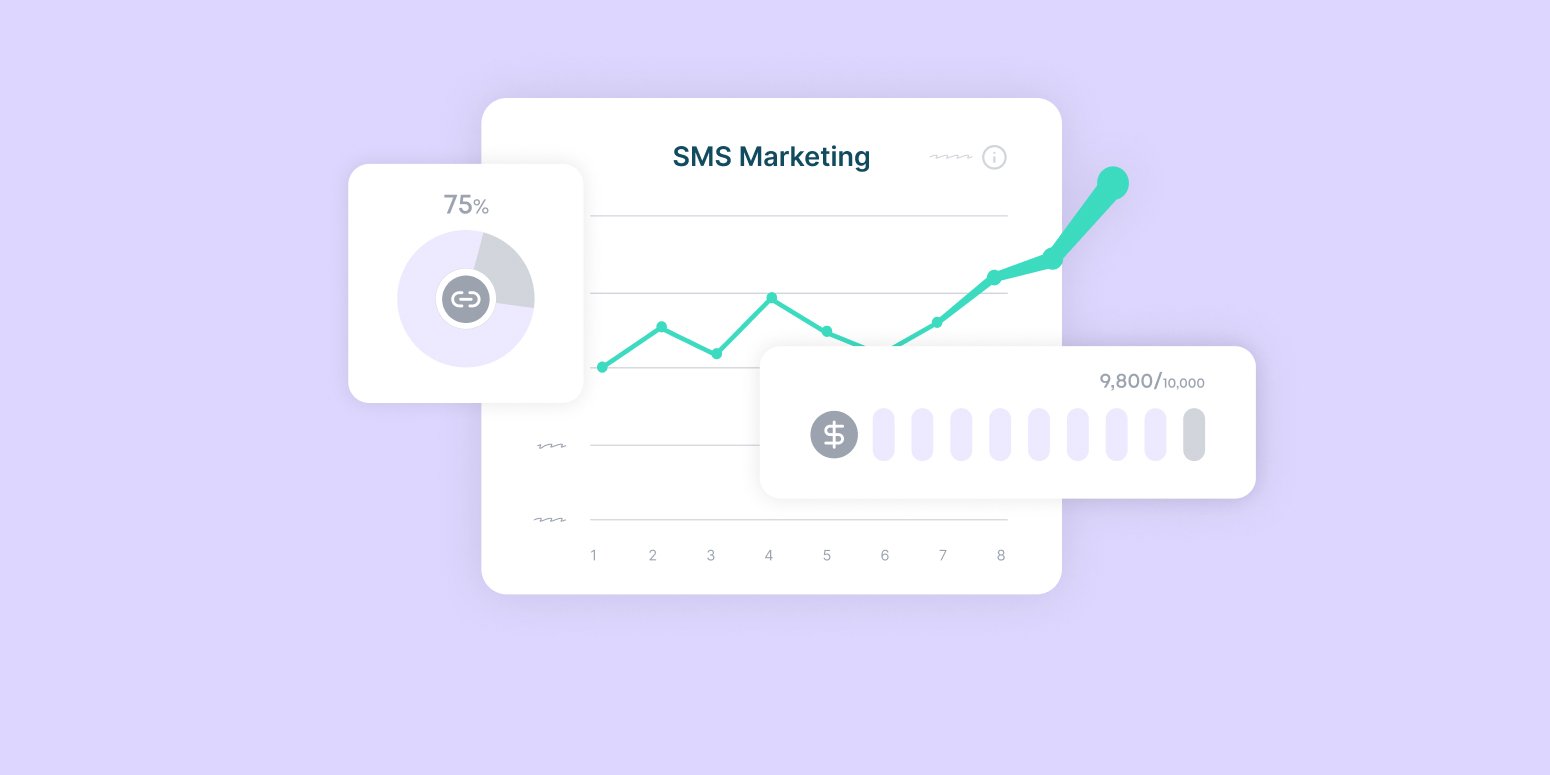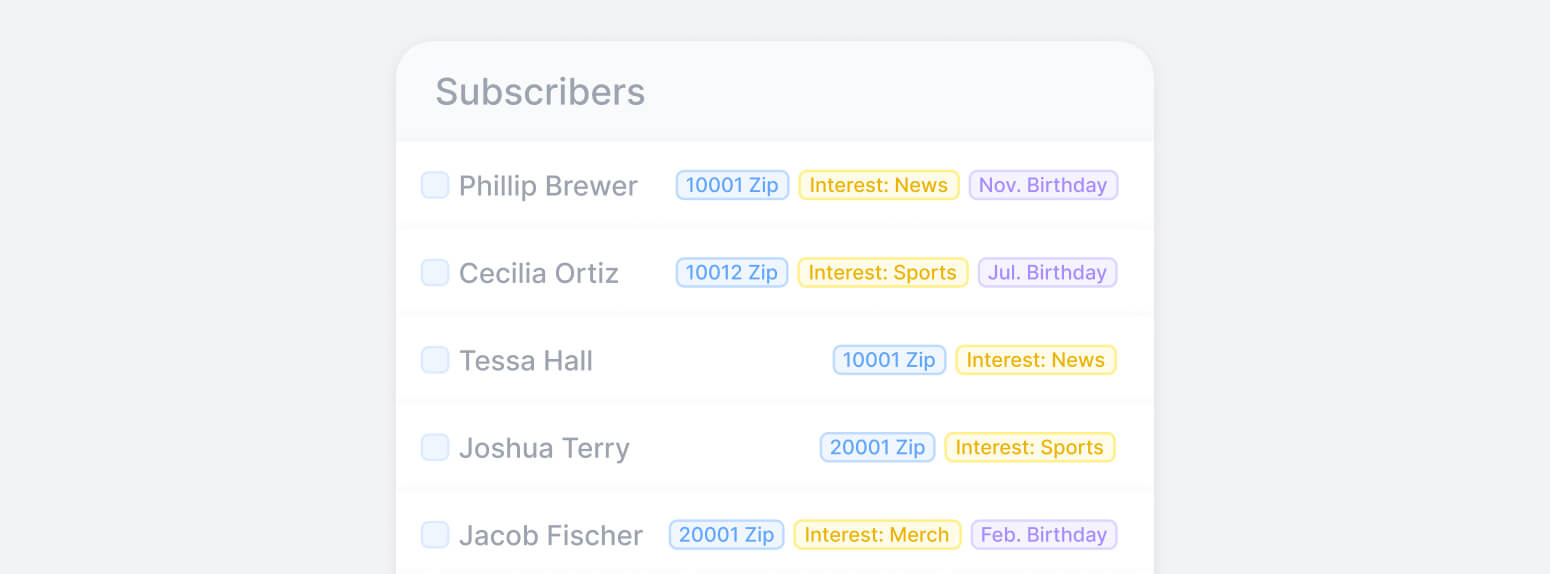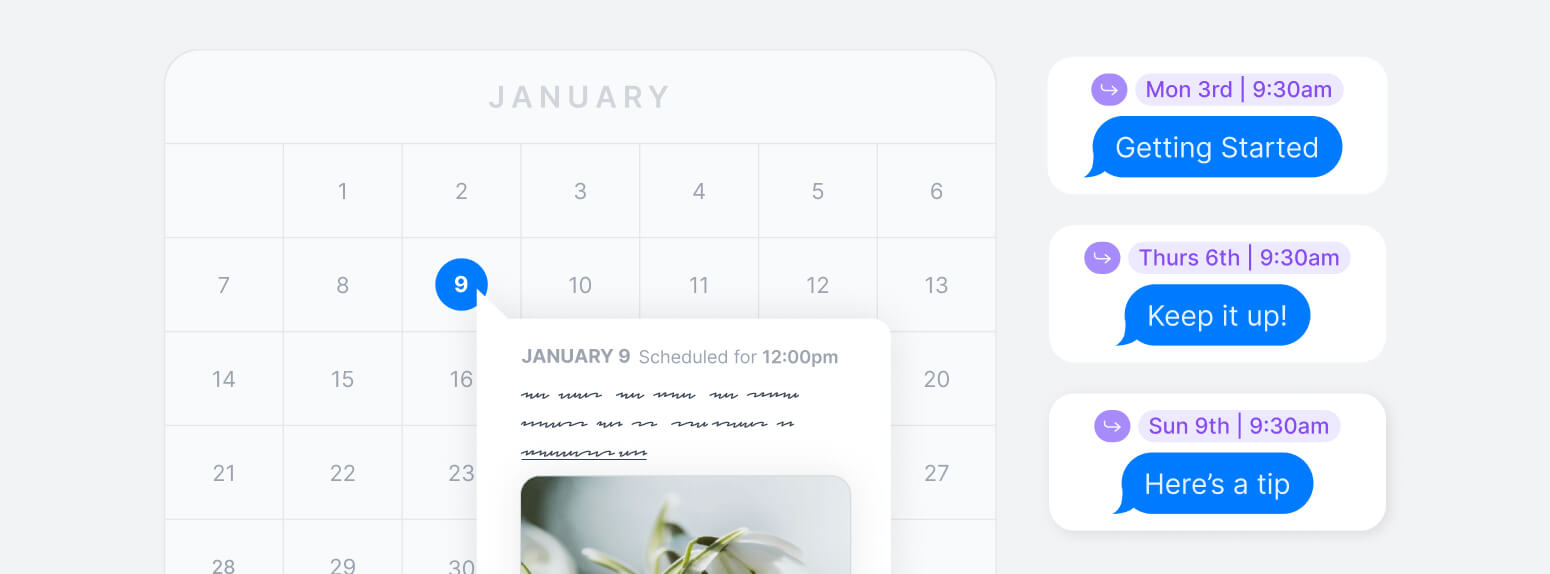
12 SMS Marketing Strategies That Actually Work in 2026
SMS remains one of the most powerful, personal, and high-converting marketing channels — and in 2026, that’s truer than ever.
Texting cuts through the noise. It’s direct, fast, and human. While inboxes overflow and algorithms shift, your audience still reads nearly every text you send — 98% of messages are opened, and most within three minutes.
But success isn’t just about sending texts. It’s about creating moments of connection that feel personal, not promotional. Whether you’re a media company, sports organization, or creator, SMS is how you turn a passive audience into an active community — and that’s where Subtext comes in.
Key Takeaways
- SMS marketing = drives unmatched engagement — open rates near 98% and CTRs around 20%.
- The best results come from segmentation, personalization, and conversation, not one-size-fits-all blasts.
- Compliance and transparency are non-negotiable; double opt-ins and clear sender identity are now table stakes.
- Rich media, automation, and API integrations make it easier than ever to scale personalization.
- Tools like Subtext help brands move from “sending messages” to building owned communities that convert.
1. Always Get Explicit Consent

Did users provide consent to receive your messages? It’s a critical question that comes down to privacy laws and three principles:
- Clear and visible notice: Users should receive a clear and visible message asking if they’d like to opt into SMS messages. If they opt in, this means your target audience wants to hear from you. If they opt out, it means they do not. While rejection isn’t ideal, it’s important to keep communication lines open and transparent.
- Consumer opt-in content: Once users opt into your SMS messages, you should send them an opt-in confirmation message that includes the name of your company or product, the expected frequency of messages, and opt-out instructions.
- Consumer opt-out content: Even if consumers convert into SMS subscribers, ensure they have the option to opt-out at any time. Under the CAN-SPAM Act, businesses are required to provide a clear opt-out mechanism. When a user opts out of receiving messages, send a final message confirming they’ve successfully opted out.
Obtaining users’ consent to receive your messages not only helps you stay compliant but also makes users less likely to confuse your messages for spam.
Pro tip: Subtext automatically handles consent workflows and 10DLC registration, so your list grows safely and your brand stays protected.
2. Segment Your Audience for Real Personalization

According to 78% of consumers, personalized content increases their likelihood of purchasing.
By leveraging audience segmentation, you can curate the messages you send based on subscribers’ preferred topics, demographics, or purchase history. This ensures every user receives tailored content that resonates with their interests.
The result? A more fun, engaging, and impactful conversation that ultimately improves your bottom line.
Learn how personalized SMS has delivered success for affiliate strategies.
Pro tip: Subtext makes segmentation simple. You can create and manage custom audience groups based on interests, location, or survey responses — so you’re always sending the right message to the right people without overcomplicating your workflow.
3. Crafting Concise & Relevant Messages
The best SMS channels offer consistent value by leaning on two elements of effective messaging:
- Relevancy: Relevant information creates impact. Examples include flash sale announcements or time-sensitive updates. These updates should be intended for recipients who can genuinely benefit from what your message offers (this is where segmentation comes in handy!).
- Concision: Communicating via text requires carefully selected wording to communicate your objective quickly and clearly. After writing your message, take a step back—are there superfluous words or phrases you can omit? Does it look overly cluttered on the mobile screen? Concision is key.
Pro tip: Subtext’s broadcast editor makes it easy to preview and refine your texts before you hit send, so every word feels intentional, every update reads cleanly, and every message fits perfectly on your subscribers’ screens.
4. Time It Right

Crafting compelling messages is one thing. Determining when and how often to send those messages involves additional considerations.
- Time: No one likes to be bothered. Respect your SMS subscribers by carefully considering the timing of your messages. As a general rule, avoid texts early in the morning or late at night. Be sure to also take your subscribers’ time zones into account. However, timing can depend on the type of business you operate. For example, if you’re a coffee shop, sending messages first thing in the morning might encourage recipients to take advantage of your offers.
- Frequency: Most SMS recipients want to hear from business a few times a week:
- More than 42% favor SMS marketing texts 4–6 times a month
- 40% are content with 2–3 messages a week
- More than 18% say they would be fine receiving messages daily
Rest assured, solidifying timing and frequency will take some trial and error. The important thing is to track performance KPIs within your SMS platform. Making data-driven decisions will help you achieve the right timing and frequency for your messaging.
Pro tip: Use Subtext’s scheduling and real-time send options to align your texts with key moments — whether that’s kickoff, breaking news, or a show premiere.
5. Identify Yourself Clearly
Never make your recipients guess who’s texting them. Use a consistent sender name, a clear, recognizable tone, and stay visible in their inbox too.
With iOS 26, Apple introduced enhanced filtering that routes messages from unfamiliar or unsaved numbers into an “Unknown Senders” folder with no badge, preview, or notification.
To stay in the main inbox, focus on both identity and early engagement. That means:
- Use a verified sender ID and consistent brand name every time.
- Encouraging users to save your number or initiate the conversation so you become a “known sender.”
- Maintaining a consistent tone so recipients instantly recognize your messages.
Consistency builds trust, and with iOS 26, trust determines visibility.
Pro tip: Always send your contact card during onboarding and prompt new subscribers to save it. With iOS 26 filtering unknown senders, saving your contact ensures your messages stay visible in the main inbox. Subtext makes this easy by letting you include your verified contact card in your welcome flow, helping you maintain visibility and trust from the very first message.
6. Use Clear Calls to Action
.jpg?width=1550&height=608&name=Call%20to%20Action%20(CTA).jpg)
Research shows CTAs get reactions from 33% of SMS message recipients, 47% of whom go on to make a purchase.
This means you should encourage users to take a specific action. Examples include asking your audience a question, including a link to your website, or replying with a keyword to enter a contest, claim an offer, or respond to a poll.
Pro tip: Add Subtext’s quick-reply prompts to encourage audience interaction — they make it effortless for subscribers to respond, engage, and take action.
7. Deliver Real Value
Good marketing continues the conversation. There is no “conclusion.” Providing value and incentives helps make your relationships last, fostering an exclusive community that generates greater impact for your business.
Examples include providing SMS recipients with:
- Behind-the-scenes information or updates your business doesn’t share on other platforms
- Loyalty points toward conversions each time a user engages with your messages
- Opportunities to provide input on your next products or services
Pro tip: Use Subtext’s surveys to ask your audience what content they want more of. Gathering feedback through two-way texting helps you deliver real value that feels personal and keeps engagement strong long after the initial campaign.
8. Optimize for Mobile from Start to Finish
Best practices for SMS marketing include recognizing SMS as a mobile-first channel. While this might seem obvious, it requires considering mobile optimization techniques like:
- Leaning on responsive design to ensure the layout and formatting of your content are adjusted based on the recipient’s device
- Double-checking that the links in your SMS message lead to mobile-optimized landing pages
Simply put, how your content looks on an individual's mobile device can make or break their experience.
Pro tip: Subtext’s built-in preview ensures your messages look great on every device before you hit send, so there’s no guesswork required.
9. Track, Measure, Optimize

We can’t stress this enough—use data to refine your strategies and generate revenue. Continuous monitoring of key metrics like open rates and conversion rates is key to achieving that.
Subtext’s SMS platform provides monthly reports on critical KPIs and a live analytics dashboard where you can check how your text channel is performing daily.
10. Keep Data Safe
Protecting subscribers’ data is essential to maintaining their trust and remaining compliant.
Using an SMS web security SSL certificate allows for more secure communications with your customers by establishing an encrypted connection between an SMS server and a web browser. You can rest assured that your messages remain intact and unaltered, and your customer data is protected.
Pro tip: With Subtext, all your audience data is centralized and secure — no need to sync lists across multiple tools or risk leaks.
11. Encourage Replies and Real Conversations

Consumer data is pivotal to making informed decisions—so why not take the time to get quick, direct feedback? Send a brief poll allowing subscribers to rate their satisfaction with your SMS messages. Ask them why. Then, show you’re listening by making suitable adjustments.
Identify any patterns across the collected data. From there, you can take action to further enhance two-way feedback, elevating your SMS strategy to success.
Pro tip: Enable Subtext’s auto-responses to acknowledge replies instantly — then follow up personally when it matters most.
12. Promote Your List Everywhere
Visibility of your SMS channel is required for subscriber growth. Best practice is to promote 2-3 times a week, as it takes the average consumer 7-8 times to see a promotion before converting. Promote on your social channels, through newsletters, add QR sign-up codes to signs at events, or include SMS in a digital subscription. We’ve outlined a variety of ways to convert your audience to SMS subscribers to ensure you're growing your channel effectively and healthily.
Pro tip: Use Subtext’s shareable signup links, keyword signups, and QR codes to capture subscribers from every touchpoint — no forms, no friction.
Build Connection That Converts with Subtext
SMS is evolving fast, but the opportunity is simple: people still read their texts.
The brands winning in 2026 are the ones that use SMS to build relationships, not just send promotions.
With Subtext, you can do exactly that — connect directly with your audience, learn what they care about, and deliver the kind of personal, high-value experiences that build loyalty. From compliance and segmentation to analytics and two-way messaging, Subtext is built to help you turn attention into action.
Want to dive deeper into how Subtext works and why it outperforms traditional SMS platforms? Explore our SMS Platform FAQ.
Ready to put it into action? Book a demo and start turning your audience into an owned community that actually responds.